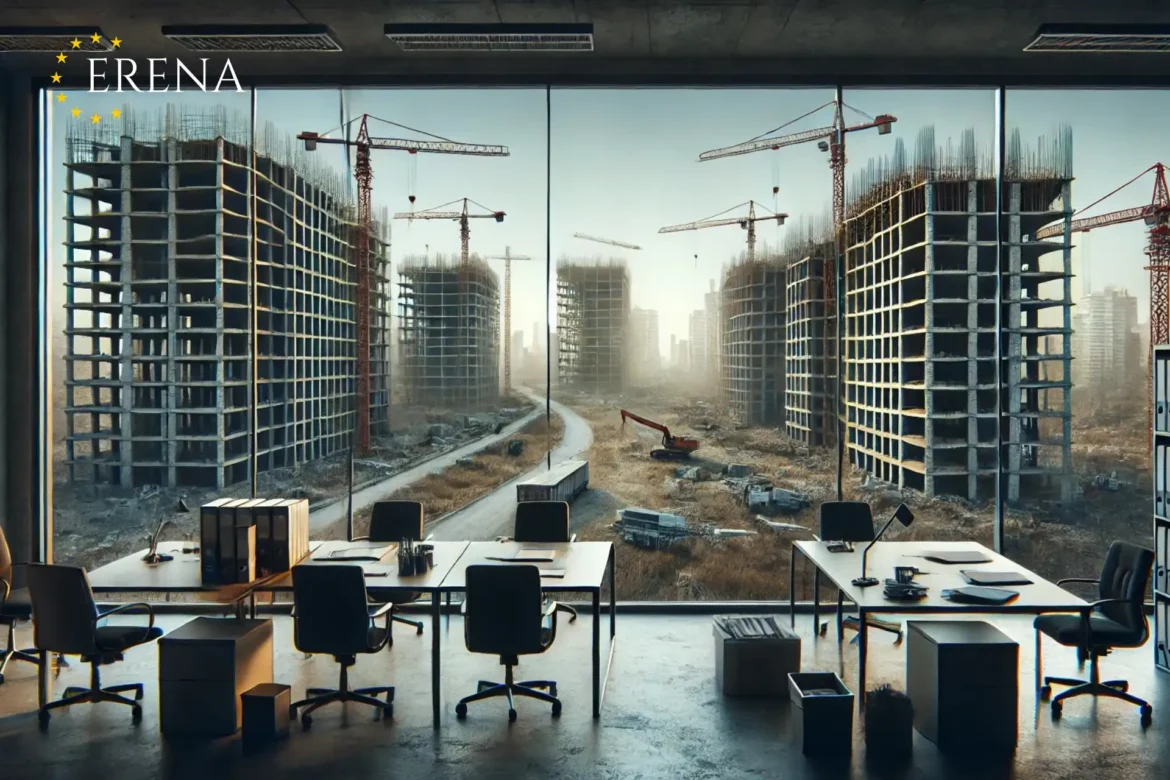The number of bankruptcies among larger companies in the real estate and construction sectors doubled in 2024 compared to the previous year. According to the consulting firm Falkensteg, a total of 66 bankruptcies were recorded, representing a dramatic increase compared to 33 cases in 2023. The impacts of this development on the real estate market, the economy, and the affected companies are far-reaching and raise questions about the future of the industry.
Causes of the Increase in Bankruptcies
The rising number of bankruptcies in the real estate and construction sectors is a direct consequence of a multitude of challenges that companies have faced in recent years. A key factor is the reversal in interest rate trends: sharply rising interest rates for construction financing have, in many cases, led to a sudden increase in financing costs, pushing especially small and medium-sized real estate companies into financial distress. Companies specializing in residential or commercial property developments have been particularly affected, as rising construction costs and reduced demand for new property projects have plunged them into crisis.
Another significant factor is the shortage of raw materials: ongoing global supply chain issues and rising prices for building materials like steel and timber have driven construction costs upward. Many companies were forced to delay projects or sign contracts under unfavorable conditions, leading to liquidity shortages.
Additionally, companies that heavily relied on real estate investments in the past have suffered significant losses due to falling property prices and declining investor confidence in the market. Purchasing real estate as an investment had been a popular business model in recent years, but increasing market uncertainty has weakened trust in this strategy.
Impact on the Real Estate Market
The bankruptcies are already having noticeable effects on the real estate market. Projects are being halted, construction plans delayed, and many properties intended for sale or rental now stand vacant. This has led to a shortage of housing and a rise in rental prices in some metropolitan areas.
The effects of the bankruptcies are particularly evident in major cities such as Berlin, Frankfurt, and Hamburg. Here, many companies invested in large-scale projects that are now partially unrealizable. This slows down new construction activity and could further exacerbate the already strained housing situation in the long term.
On the other hand, the bankruptcies may also create opportunities for investor groups and private equity firms seeking to capitalize on the potential of failed projects. Many properties or construction projects are expected to be sold at heavily reduced prices, opening up potential for future investments.
Effects on Employment
The bankruptcies are also impacting the labor market. Many companies in the real estate and construction sectors are being forced to lay off employees, leading to a rise in unemployment within the sector. Skilled workers and engineers employed by the affected companies are particularly impacted. The construction industry is a key economic sector that provides numerous jobs, and an increase in bankruptcies leads to greater uncertainty in the labor market.
Outlook and Possible Solutions
How the situation will develop remains uncertain. Industry experts believe that the reversal in interest rate trends and economic uncertainty will continue to pose challenges for the sector in 2025 and possibly beyond. Further bankruptcies could follow if companies fail to adapt to the changing market conditions.
One possible solution for financially struggling companies could be consolidation and mergers. This would allow companies to pool resources and spread risks. For smaller companies unable to save themselves, acquisition by larger, more stable market players could be an option.
Additionally, some experts are calling for increased government support and a review of financing conditions for property construction to stabilize the sector. In particular, reforms regarding interest rates and subsidy programs for residential construction may be necessary to encourage new construction in the coming years and prevent further bankruptcies.
The doubling of bankruptcies in the real estate and construction sectors in 2024 is a clear sign of the current challenges facing the industry. Rising interest rates, material shortages, and market uncertainties have significantly slowed the growth of many companies. While the bankruptcies may lead to a market slowdown in the short term, they could also result in a market correction and industry consolidation in the long term. Comprehensive support and adjustments to the framework conditions by policymakers may be crucial to ensuring the stability of the real estate market.
Bankruptcies of large companies in the real estate sector
532

